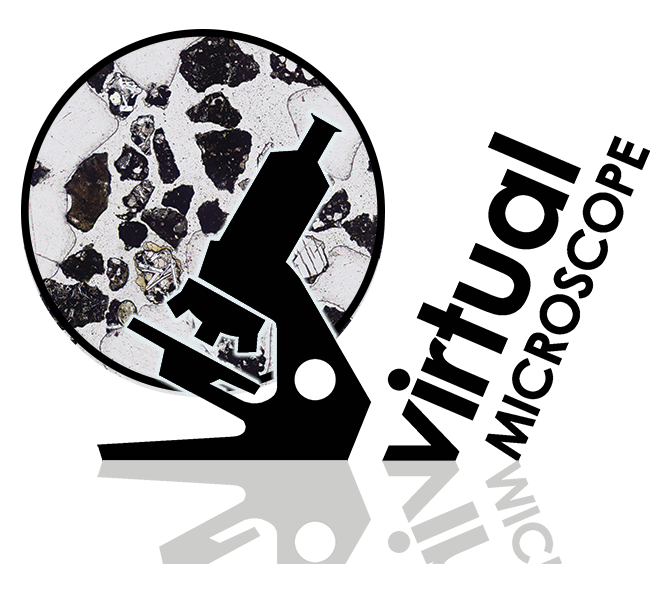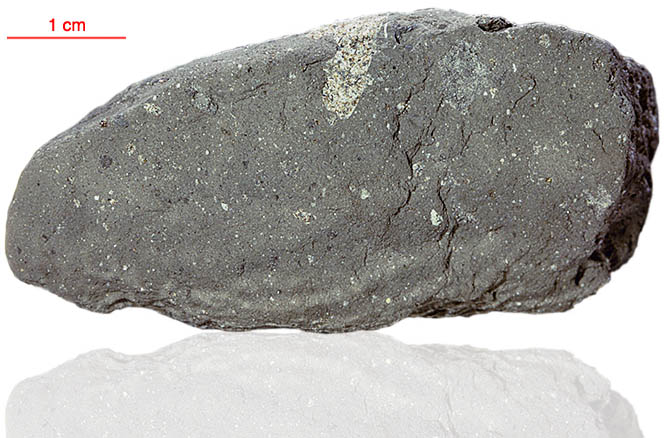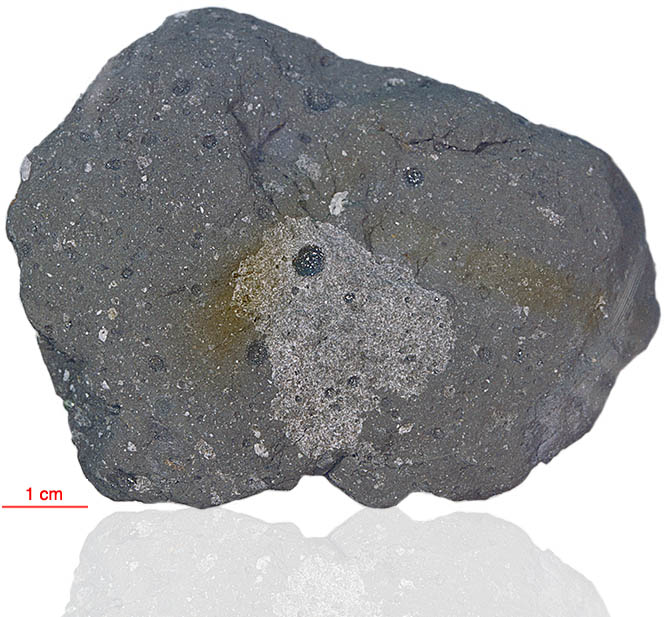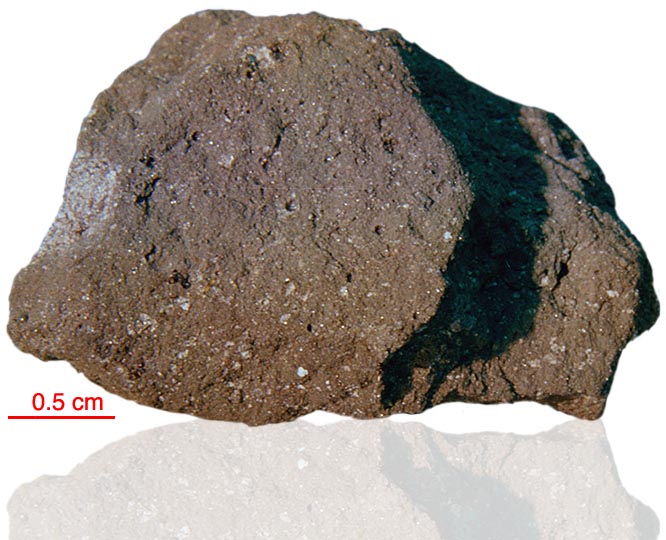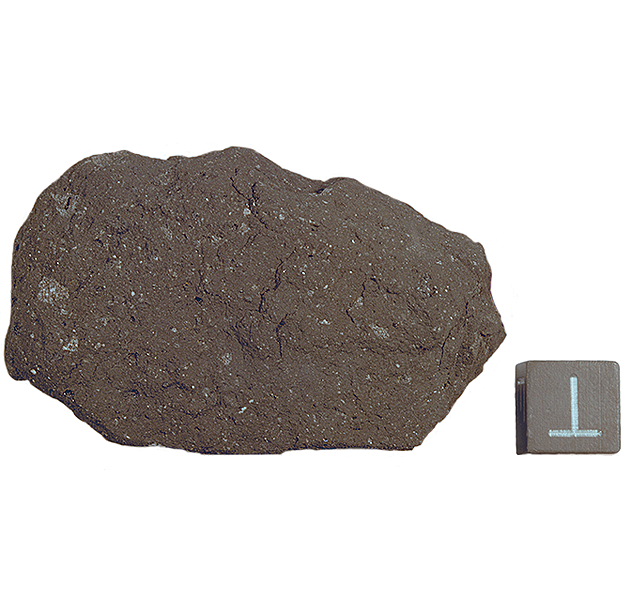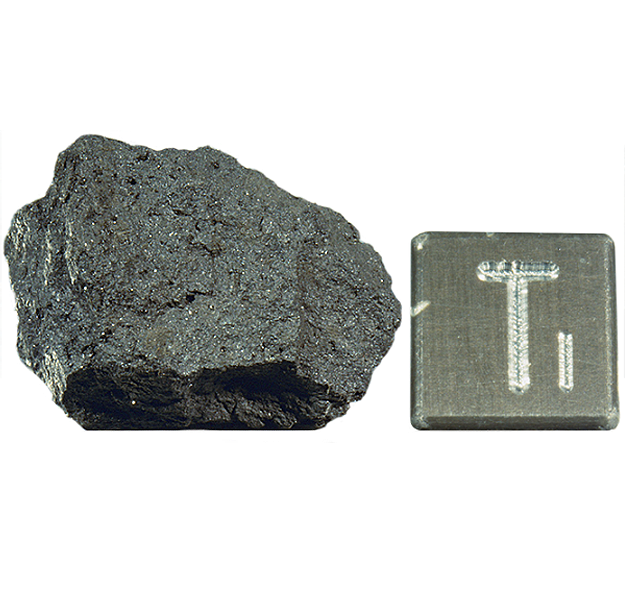
Fact sheet
10031 is a high-K ilmenite basalt. The rock cooled quickly (quenched) after eruption and texturally it can be described as a vitrophyre (a glass-rich rock with some larger crystals). The rock was erupted and cooled around 3.6 billion years old ago.
In thin section, it contains phenocrysts of olivine and the rare iron-magnesium titanite, armalcolite. The matrix of this volcanic rock is composed of a fine-grained to glassy groundmass. The armalcolite is mantled by rutile-bearing ilmenite. Platy ilmenite with feathery edges, pyroxene and minute troilite spheres can also be observed in reflected light. You may spot some small black holes in a grid pattern in the glue on this sample - we believe this may have been caused by analysis using an electron microprobe.
Further details of this and other Apollo samples are here: http://curator.jsc.nasa.gov/lunar/
The Apollo 11 samples create an iconic collection since they were the first rocks collected by humankind that were returned to Earth from another solar system body. The Apollo 11 team collected and returned 22 kg of rock and soil samples.
Apollo 11 launched from Cape Kennedy on 16 July 1969. An estimated 530 million people watched Armstrong's televised image and heard his voice describe the event as he took "...one small step for a man, one giant leap for mankind" on 20 July 1969.

